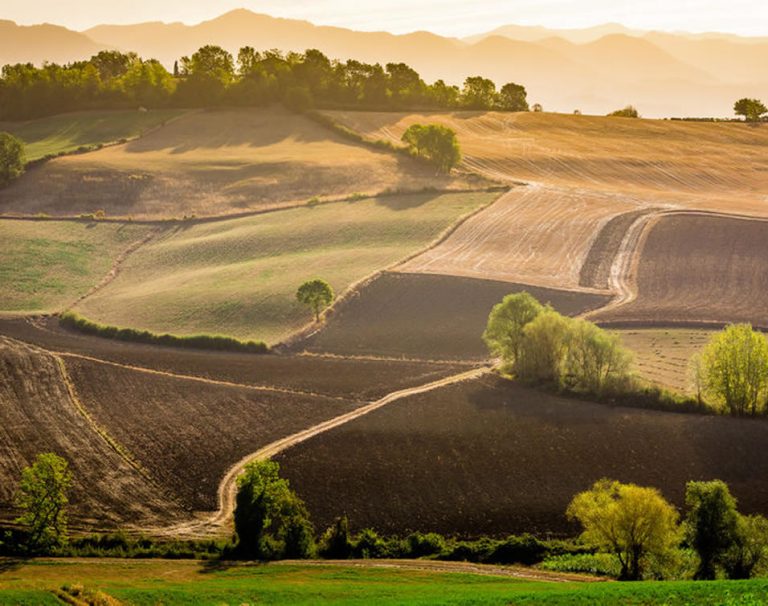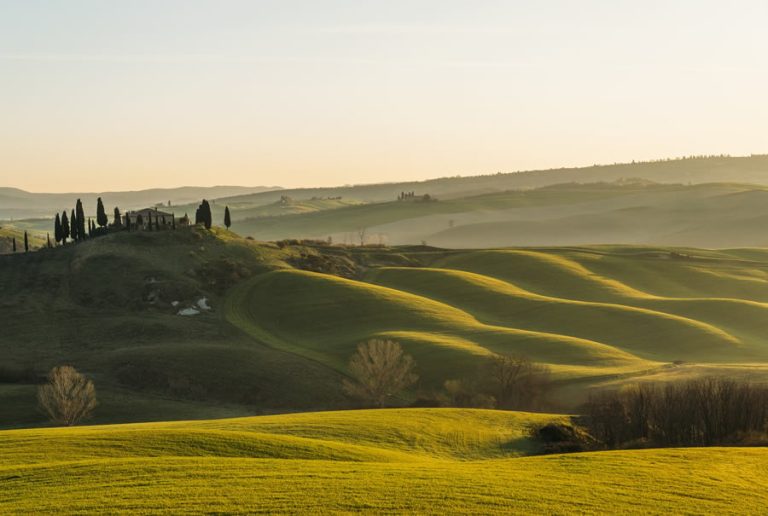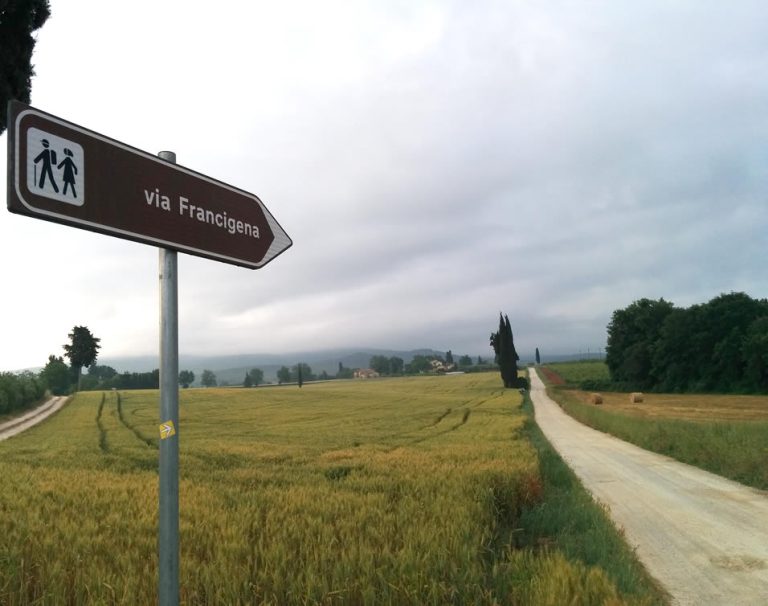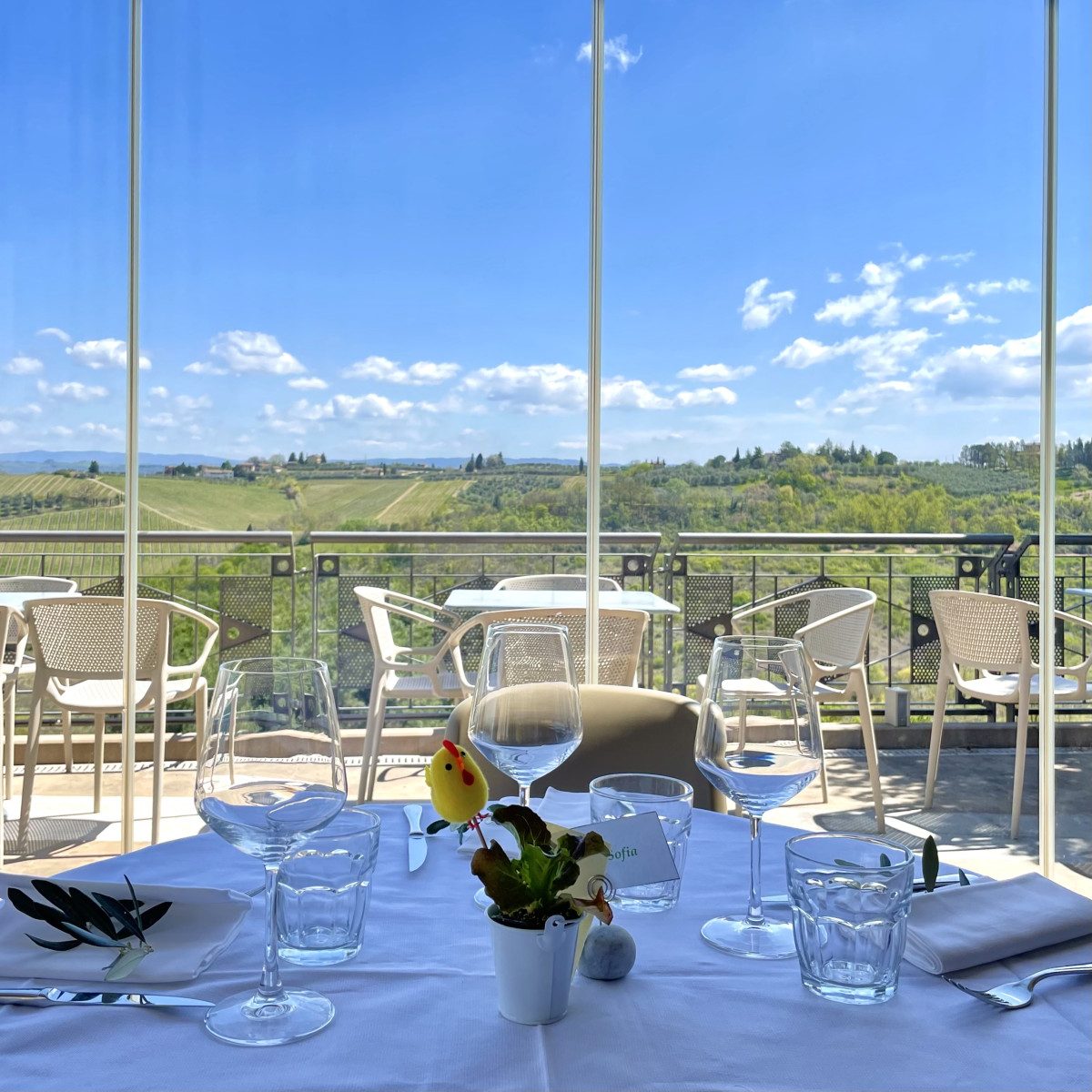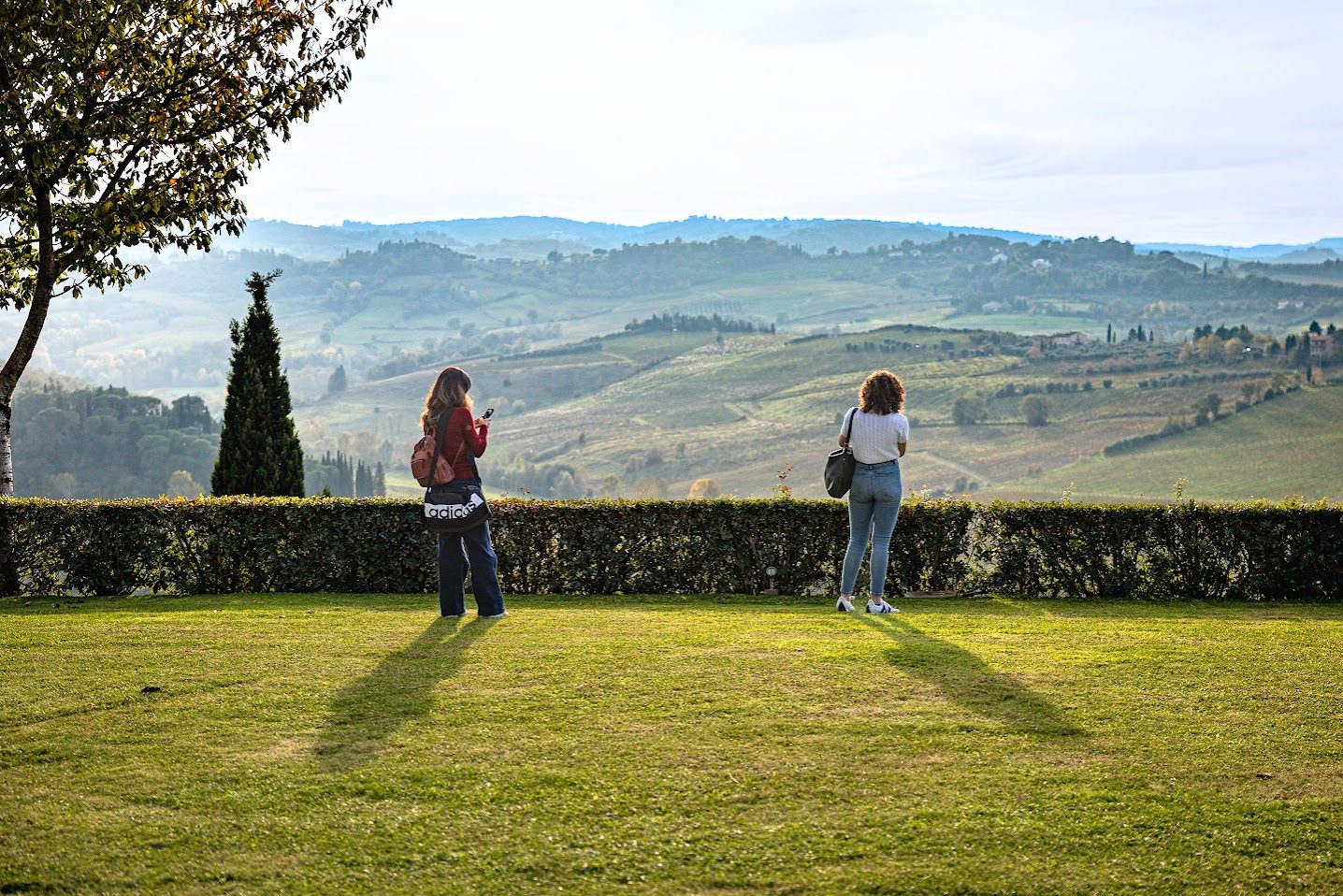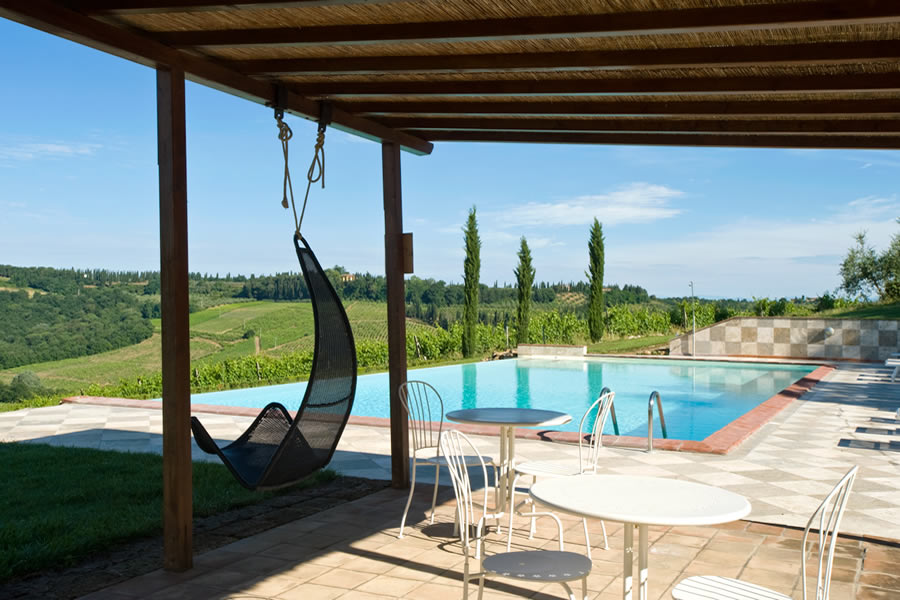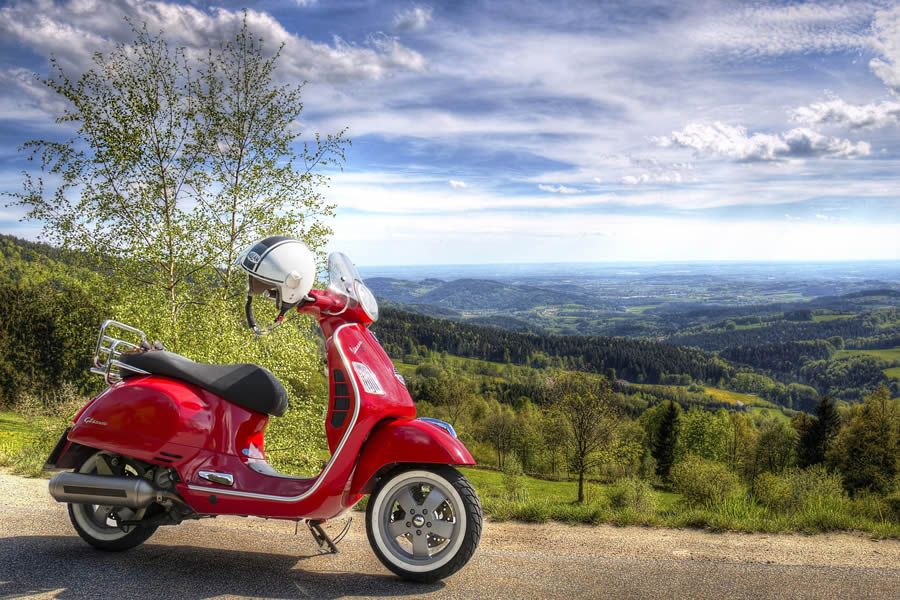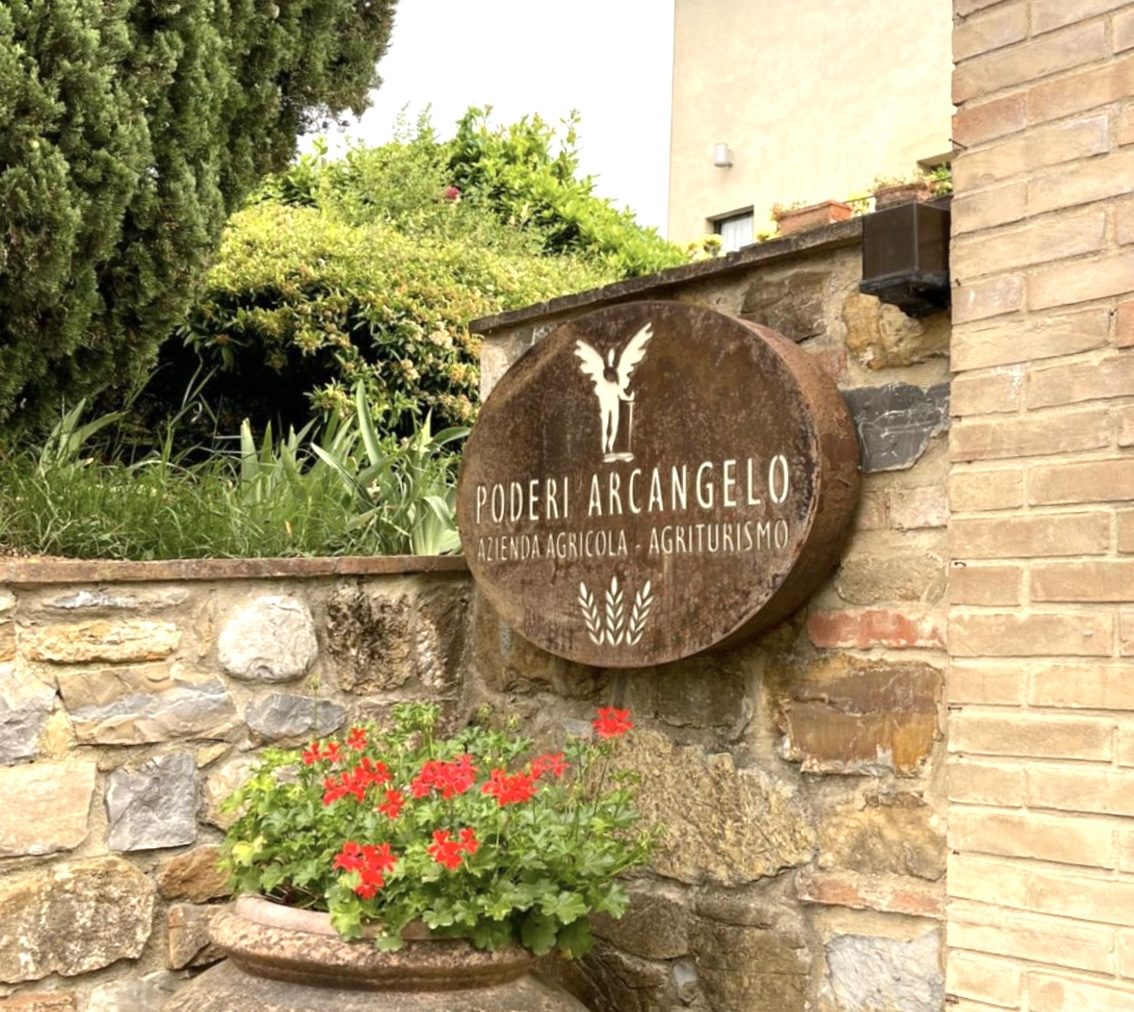Unusual Tuscany

The Jerusalem of San Vivaldo
This particular shrine, also known as the Jerusalem of Tuscany, is located a few kilometers from Poderi Arcangelo Farmhouse in San Gimignano, the center of a vast wooded area where, in the early fourteenth century, the friar Vivaldo Stricchi from San Gimignano retired to a hermit life, choosing the hollow of a chestnut tree as his home.
In this place so rich in spirituality, between 1500 and 1515, Fra Tommaso da Firenze had a chapel complex and temples decorated with polychrome terracottas inspired by the life and Passion of Christ and arranged in such a way as to Reproduce on a small scale the floor plan of the Jerusalem of the time. Thanks to a bull by Pope Leo X granting indulgences to those who visited St. Vivaldo, this shrine surrounded by nature became a substitute pilgrimage destination for all those who could not sustain the actual journey to the Holy Land.
Today, as then, one can admire the classical-style chapels with their extraordinary terracottas of the Della Robbia school and enjoy a moment of reflection in the tranquility of this timeless place.
Barberino val d'elsa
Barberino Val d ‘Elsa is a charming medieval village on the outskirts of Florence, and it is at the enmity between Florence and Semifonte, a legendary vanished city, that the history of Barberino Val d’Elsa takes shape.
Legends passed down through the centuries tell of a powerful city, Semifonte now a medieval archaeological site, that challenged Florence for wealth and importance due to its strategic position near the Volterra road and the very important Via Francigena.
The Florentines fearing the mighty Semifonte decided to attack and destroy it, and Grand Duke Ferdinand I dei Medici enacted a law forbidding any construction on the hill where the city stood, except for the Chapel of San Michele.
The small Chapel has a dome with an octagonal base and is a scale reproduction of the dome of the more famous Santa Maria del Fiore in Florence. The Chapel was built 1594 and 1597 and commissioned by Giovan Battista Capponi based on a design by Santi di Tito.
Once Semifonte razed the ground, the Medici family forced the surviving citizens to move to Barberino Val D’elsa enriching its town fabric.
Passing through the Porta Senese you enter the ancient village of Barberino Val d’Elsa where you can admire beautiful buildings such as Cardinal’s Palace, where the emblem of the Barberini family and that of Pope Urban VIII is displayed, Praetorian Palace whose facade is decorated with the 35 coats of arms of important noble families; also not to be missed is the Church of St. Bartholomew, with the fragment of a 14th-century with its beautiful terrace overlooking the winding hills with olive groves and vineyards.
Agriturismo Poderi Arcangelo, near Barberino Val d’Elsa, is therefore the ideal place to stay to discover an unusual Tuscany.
The Via Francigena: to discover unusual Tuscany
From Pontermoli to Lucca, this is the route of more than 300 km that crosses the Via Francigena in Tuscany, a path that many take to discover in a unique way its landscapes, culture and centuries-old history of our beautiful region. The Via Francigena can be traveled as in the past on foot or on horseback, but today it is also possible to explore the places it passes through by bicycle and for some stretches by car.
The route traverses hills and valleys, but also the rich historical and artistic heritage of our area such as San Miniato and San Galgano and the picturesque locations of Monteriggioni and Radicofani.
San Galgano for example is known for the great Abbey without a roof and for the hermitage of Monte Siepi, while the ancient Borgo di Monteriggioni, which you will discover if you choose to walk stage number 33 of the Via Francigena, is famous for being among the Italy’s oldest walled villages.
These are just two examples of the countless places you can encounter along the Via Francigena route, and both are only a 50-minute drive from Agriturismo Poderi Arcangelo.
Discovering Tuscany along the Via Francigena by staying at Agriturismo Poderi Arcangelo will give you unique memories of a timeless journey of peace and tranquility immersed in the harmony of nature.
St. Galgano and the Sword in the Stone
San Galgano is beautifully located in Val di Merse just 35 km south of Siena and can be reached by car, about a 50-minute drive from Poderi Arcangelo Agriturismo in San Gimignano.
The place includes two points of attraction; the large Abbey with a huge roofless church and the hermitage of Monte Siepi where, according to legend, St. Galgano retired to a hermit life, there as a symbol of peace he stuck his sword inside the rock, where it still stands today.
The now roofless Abbey of St. Galgano was built by Cistercian monks who normally built their monasteries near the river and along important thoroughfares, but after the Famine and Plague that hit the community hard, the monks moved to Siena.
San Galgano is beautifully located in Val di Merse just 35 km south of Siena and can be reached by car, about a 50-minute drive from Poderi Arcangelo Agriturismo in San Gimignano.
The place includes two points of attraction; the large Abbey with a huge roofless church and the hermitage of Monte Siepi where, according to legend, St. Galgano retired to a hermit life, there as a symbol of peace he stuck his sword inside the rock, where it still stands today.
The now roofless Abbey of St. Galgano was built by Cistercian monks who normally built their monasteries near the river and along important thoroughfares, but after the Famine and Plague that hit the community hard, the monks moved to Siena.
After visiting the Abbey, take the indicated path toward The Hermitage of Mount Hedges. Now on the site is a chapel that was built after St. Galgano’s death in the center of which is the stone where St. Galgano thrust his sword as a sign that he had left his weapons for good to begin a new life of faith. Whether the sword actually dates back to the time of St. Galgano is in question, but apparently research done in 2001, showed that it does indeed.
A rectangular chapel was added in the 14th century, later frescoed by the Sienese painter Ambrogio Lorenzetti. After visiting the chapel enjoy the view in peace before returning to Poderi Arcangelo Agriturismo in San Gimignano or visiting other villages in the area, for example Monticiano.





